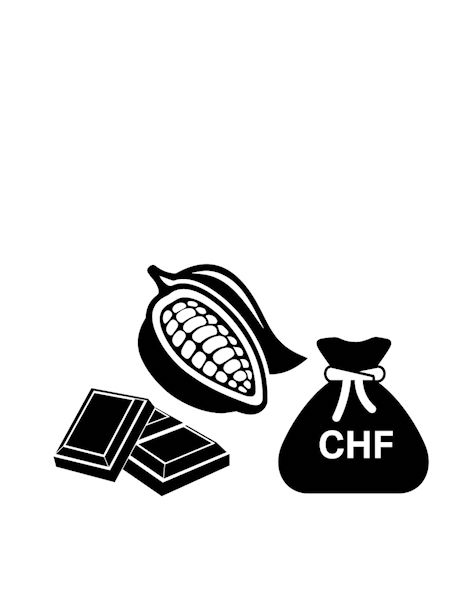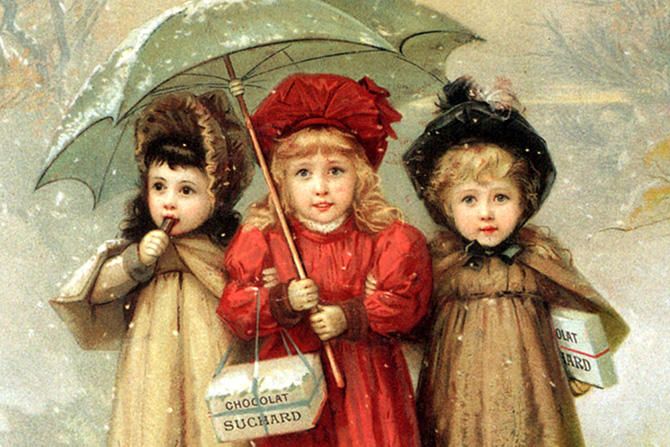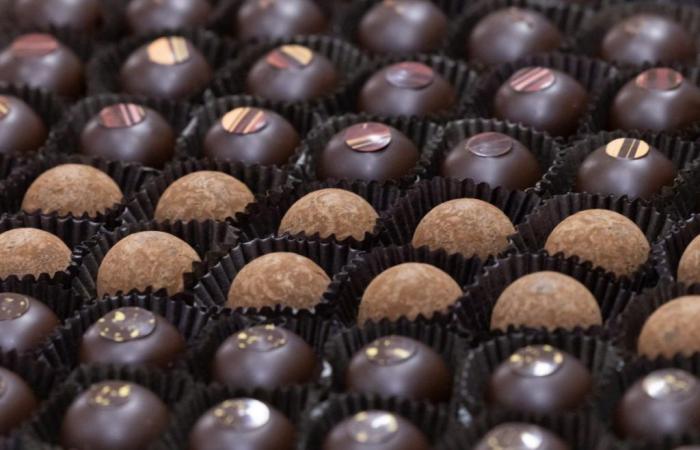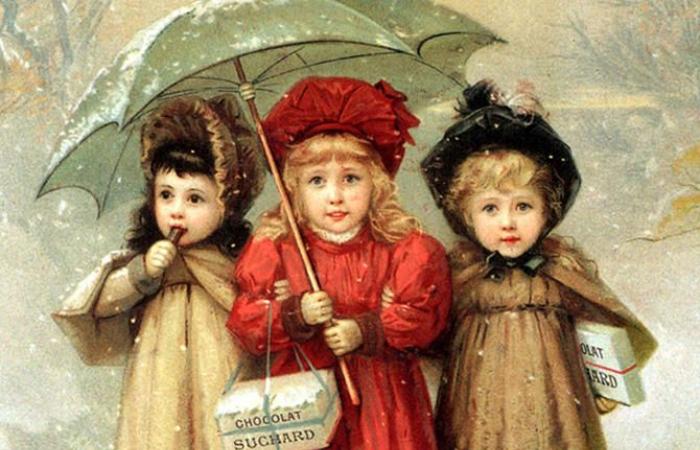The chocolate of the future could have the same appearance, but not necessarily the same ingredients.
KEYSTONE
Between the high price of cocoa beans, customer concerns and regulations regarding deforestation and child labor, chocolate producers are under pressure. Consequence: research is moving forward to reduce or even eliminate the use of cocoa in the chocolate of tomorrow.
This content was published on
June 17, 2024 – 09:05
The Swiss chocolate industry is under great pressure. Cocoa prices have reached record levels, recently exceeding 10,000 dollars (9,150 francs) per tonne for the first time. Bad weather conditions and diseases on plantations in Ivory Coast and Ghana have led to a deficit in cocoa beans for the third year in a row. However, the two West African countries represent around 60% of world cocoa production.
“Compared to the average prices recorded a year ago ($2,752 per tonne in London and $3,040 per tonne in New York), the average prices observed in April 2024 represent significant increases of 301% and 244% respectively,” he said. indicated the International Cocoa Organization (ICCO) in its market review for the month of April.
To further increase pressure, the European Union has introduced a “zero deforestation” supply chain regulation (EUDR) which will come into force in January 2025. Seven agricultural products, including cocoa and cocoa products such as chocolate, can only be sold in the EU if it is proven that they have not caused deforestation since 2020. Germany alone represented 21.7% of Swiss chocolate exports in 2023, and around 40% of all Swiss chocolate exports ended up in the EU trade basket.
“Time is running out: without a solution by the end of the year, access to the EU market risks becoming significantly more complicated,” Chocosuisse said in a press releaseExternal link from February 14. The Association of Swiss Chocolate Manufacturers was reacting to the Swiss government’s decision not to introduce similar regulations in Switzerland, but to assess the impact on Swiss companies after the summer holidays.
Cocoa cultivation also presents other problems such as child labor and the presence of heavy metals like cadmium.
More
More
Toxic cocoa beans: is there too much cadmium in your chocolate?
This content was published on
August 28. 2023
Lax international standards mean the chances of being exposed to cadmium in chocolate depend on where you live.
read more Toxic cocoa beans: is there too much cadmium in your chocolate?
New substitution methods
It is this harsh environment that is fueling the search for new ingredients that can replace or minimize the use of cocoa in chocolate, but which are grown in Europe. The British company NukokoExternal link is one of the start-ups making the most of this trend. She managed to raise $1.5 million in seed funding this year to develop her cocoa-free chocolate made from fava bean seeds.
“Nukoko is investing in this area because there is a critical need for alternatives now and in the future, as we have seen with the current increases in the price of cocoa, caused by a supply deficit generated by climate change. The market needs alternatives from different regions that are not affected by climate change, providing a cheaper and more sustainable option in the long term,” said Ross Newton, founder and co-CEO of Nukoko, to swissinfo.ch by email.
Nukoko sources its beans from the United Kingdom, which harvests 740,000 tonnes per year. Like cocoa beans, fava bean seeds contain a protein called vicilin which, when broken down through fermentation and roasting, produces a taste similar to chocolate.
More

More
The best stories
Stay up to date with the best stories from swissinfo.ch on different topics, straight to your inbox.
read more The best stories
The German company ChoVivaExternal link is another European startup that uses fermentation and roasting to produce high-quality chocolate. Instead of beans, the raw materials used are oats and sunflower seeds.
“After studying the history and production of chocolate in depth, we discovered that its typical taste does not come only from the cocoa bean. In reality, up to 80% of flavors are formed during production processes such as fermentation and roasting,” we can read on the company website.
Another raw material that could replace cocoa is carob, a legume grown in southern Europe. The Italian start-up ForeverlandExternal link has created a range of chocolate with carob as the main ingredient. The company claims its Freecao product uses 90% less water and produces 80% CO emissions2 less than conventional chocolate.
Virtuous chocolate?
The next front line in innovation is using chocolate as a proactive way to benefit society and the environment. A research team from the Swiss Federal Institute of Technology in Zurich has developed a cocoa gelExternal link made from the fruit (pod) of the cocoa tree, which replaces the sugar added to chocolate. This would allow most of the pod to be used, leaving only the outer shell which can be used for composting or as fuel. Consumers will also benefit, because chocolate made from this cocoa gel contains 20% more fiber and 30% less saturated fat than conventional dark chocolate.
More

More
How the humble cocoa bean turns into chocolate and money
This content was published on
06 Jan. 2023
The chocolate supply chain is complex and generates inequalities.
read more How the humble cocoa bean turns into chocolate and money
The Wyss Institute for Biologically Inspired EngineeringExternal link from Harvard University, financed by Swiss billionaire Hansjörg Wyss, goes even further. Its researchers have developed technology that converts greenhouse gases such as CO2 into a fat imitating cocoa butter, using only microbes and electricity. The gas fermentation technology, commercialized by Circe Bioscience, a spin-off company, has raised more than $8 million from investors to develop the world’s first chocolate made with fermentation-derived cocoa butter.
However, these technologies are still in their infancy and the chocolate of the future will not be radically different from what we are used to.
“I like to think that for consumers, the future of chocolate in general will be the same, that is to say that the same brands that they love will offer them the same delicious products that they always have. appreciated at an acceptable price, says Ross Newton. What could change is that the chocolate contained in or around these products will be composed, in part or entirely, of different sources, such as fava beans in our case.
Text proofread and verified by Marc Leutenegger, translated from English using DeepL/op
More

More
“How’s Switzerland?” Take part in our big national survey
This content was published on
May 22. 2024
The SSR wants to know what concerns you in your daily life and what you think about the major current issues.
read more “How’s Switzerland doing?” Take part in our big national survey
Learn more
Following
Previous

More
The pioneers of Swiss chocolate
This content was published on
Dec 13 2017
The history of the chocolate industry is also that of Swiss innovation, immigration and luck.
read more The pioneers of Swiss chocolate

More
Laboratory chocolate – is it good?
This content was published on
Jul 08, 2021
SWI swissinfo.ch was able to follow the Zurich team which developed the first cell culture of cocoa beans.
read more Laboratory chocolate – is it good?












